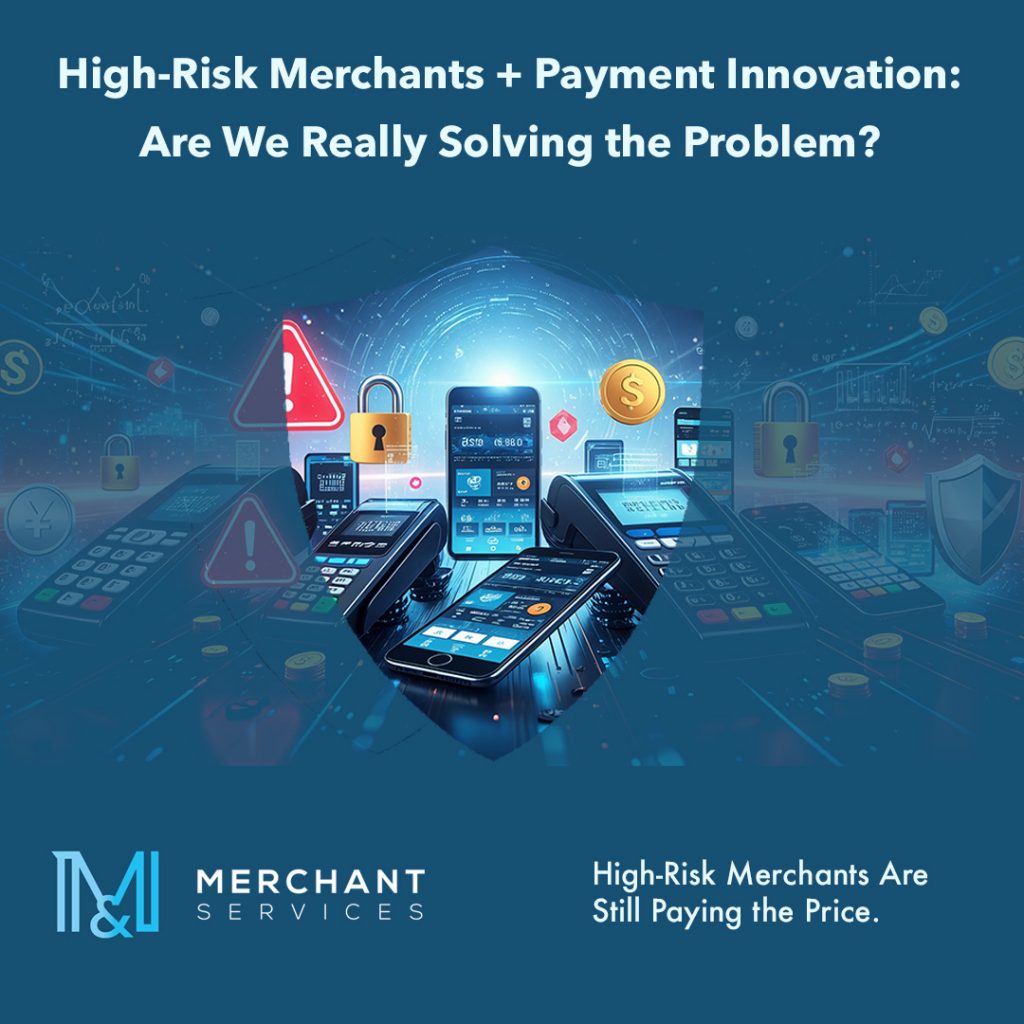Pioneering new payment rails—such as blockchain-based crypto rails (symbolized by the Bitcoin image above)—could empower traditionally high-risk sectors (cannabis, adult content, crypto, supplements) long locked out of mainstream banking. Yet many merchants still endure clunky checkout flows, high decline rates, or outright shutdowns under legacy providers. Dispensaries, for example, cannot accept Visa/Mastercard due to federal law, so they resort to alternatives like ACH transfers, crypto payments or cashless ATMsbankcardinternationalgroup.com. Similarly, dedicated “high-risk” acquirers have historically charged exorbitant fees (often 6–10%+ of each sale) and offered poor support just to cover their elevated fraud riska16z.com. Are we leveraging these new rails effectively, or are old barriers still holding risky businesses back?
Legacy Challenges for High-Risk Merchants
High-risk categories still bear the brunt of outdated processes and costs. Many specialized providers have offered slow, opaque service with extra fraud holds and inadequate support. Some even skirt rules (masking business details) – only to be caught and abruptly cut off, leaving merchants stranded or blacklisteda16z.com. And new entrants in areas like nutraceuticals face the classic “high-risk penalty”: higher chargeback/fraud exposure leads to “more expensive rates and long, complicated approval processes”finix.com. In short, risk-averse banks and networks have tended to treat these merchants as liabilities, not partners.
Emerging Rails, AI & Tailored Solutions
- Alternative Rails: To break free of card rails, many high-risk merchants now layer in other payment methods. This can include open-banking (EU/UK account-to-account) transfers, ACH/SEPA debits, or even stablecoin/crypto walletsbinderr.comflagright.com. Major payment networks and banks are even exploring stablecoin rails, reflecting the push to “operate on two rails at once” (fiat and crypto) for global commerceflagright.com. Such rails can lower chargeback risk and fees if used wisely.
- AI Fraud Detection: Real-time and mobile payment flows demand instant fraud checks. In fact, roughly 71% of financial institutions now deploy AI/ML systems to spot fraudulent patterns in faster-payment channelspymnts.com. These tools can flag anomalies (like account takeovers or mule networks) in milliseconds – a game-changer compared to slow manual reviews.
- Unified Compliance Platforms: A new class of compliance tech is emerging to tame complexity. Rather than juggling separate systems for wire transfers versus crypto transfers, these platforms ingest all transaction data and apply one set of AML/KYC rules across every railflagright.com. In practice this means a suspicious crypto transfer and a dubious wire from the same user feed into a single dashboard. Compliance teams can then see a holistic risk profile instead of missing red flags between silos.
- Vertical-Specific Gateways: Fintechs are also bundling contextual tools around payments. A recent analysis predicts “vertical-specific, software tools that wrap the transaction and build-in fraud detection and streamlined compliance”a16z.com. We see examples already: gaming payment platforms might attach purchases to a gamer’s profile or in-app wallet, while sports-betting checkouts include built-in geolocation and age verification (plus weekend liquidity management) to meet regulationsa16z.com. Cannabis or alcohol brands could use D2C payment layers coupled with logistics tracking so products only ship to legal jurisdictions. In each case, payments aren’t just accepted – they’re intelligently managed with fraud/preventive compliance as part of the stack.
Discussion Questions
- Are alternative rails (open-banking, stablecoins, crypto) actually reducing declines and costs for high-risk merchants, or are they still niche solutions?
- How effective are AI/ML fraud tools at preventing chargebacks in real-time? Is adoption keeping pace with new fraud tactics?
- Have you seen “unified” compliance platforms work in practice, or do compliance teams still juggle separate fiat vs. crypto workflows?
- Which high-risk vertical feels most underserved by today’s payment tech (cannabis, adult, gaming, supplements, etc.) – and what are their biggest pain points?
- Finally, are regulators and banks catching up (e.g. new banking laws, crypto integrations) or is fintech innovation outstripping the rules?
We’re seeing rapid change – but plenty of open questions remain. I’d love to hear how others in fintech, compliance or payments are approaching these challenges. What’s working for you, and where is the industry still falling short?
Citations
Cannabis Payment Processing: The Ultimate Guide for Dispensaries
https://bankcardinternationalgroup.com/industries-served/cannabis-payment-processing/Beyond Payments for High-Risk Industries | Andreessen Horowitzhttps://a16z.com/beyond-payments-for-high-risk-industries/Beyond Payments for High-Risk Industries | Andreessen Horowitzhttps://a16z.com/beyond-payments-for-high-risk-industries/A Payment Remedy for Nutraceutical and Supplement Companies | Finixhttps://finix.com/resources/blogs/a-payment-remedy-for-nutraceutical-and-supplement-companiesHow to Setup a High Risk Payment Gateway (2025 Guide)https://binderr.com/marketplace/how-to-setup-a-high-risk-payment-gatewayUnified Compliance for Fiat & Stablecoin Payments | Flagrighthttps://www.flagright.com/post/powering-fiat-and-stablecoin-payments-with-flagright-unified-compliance71% of Banks Turn to AI to Fight Faster Payments Fraudhttps://www.pymnts.com/fraud-prevention/2024/71-percent-of-financial-institutions-turn-to-ai-to-fight-faster-payments-fraud/Unified Compliance for Fiat & Stablecoin Payments | Flagrighthttps://www.flagright.com/post/powering-fiat-and-stablecoin-payments-with-flagright-unified-complianceBeyond Payments for High-Risk Industries | Andreessen Horowitzhttps://a16z.com/beyond-payments-for-high-risk-industries/Beyond Payments for High-Risk Industries | Andreessen Horowitzhttps://a16z.com/beyond-payments-for-high-risk-industries/

